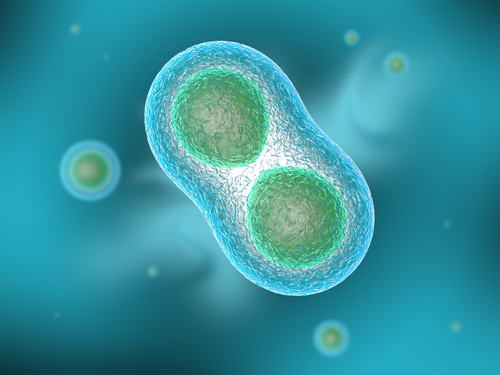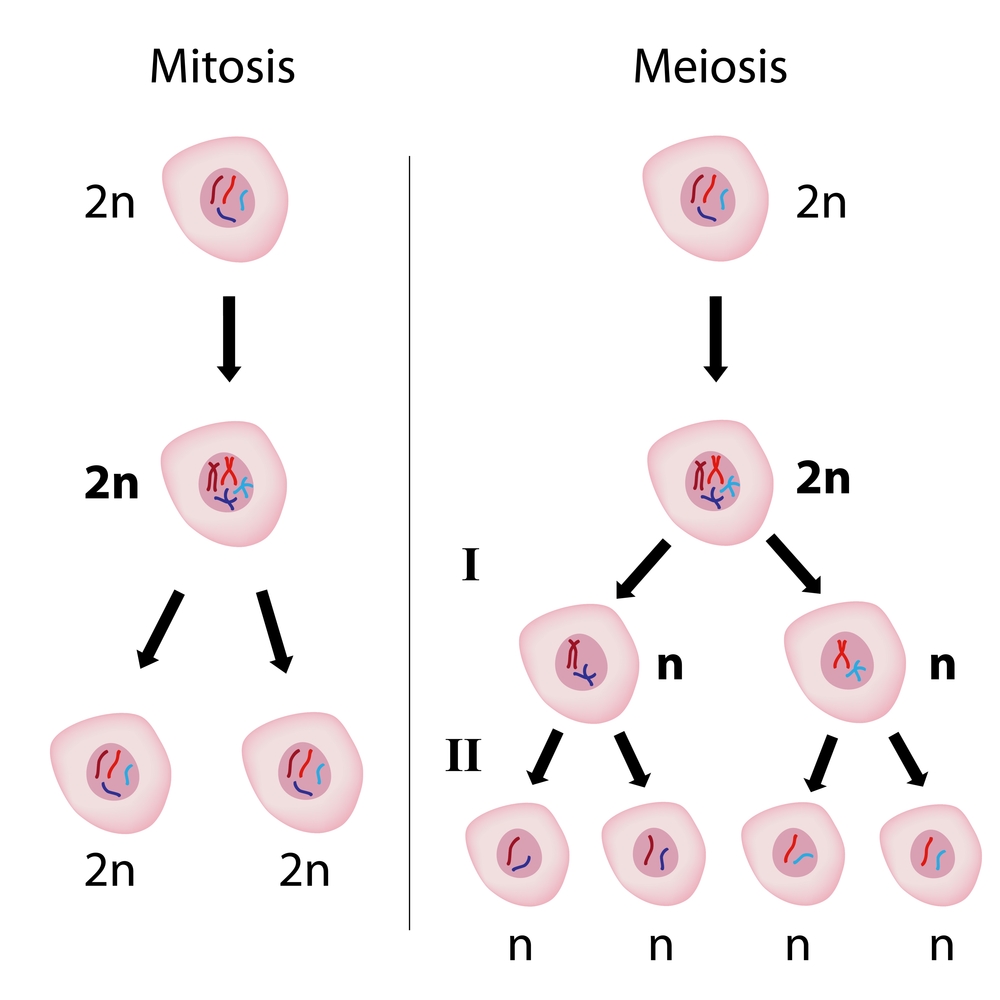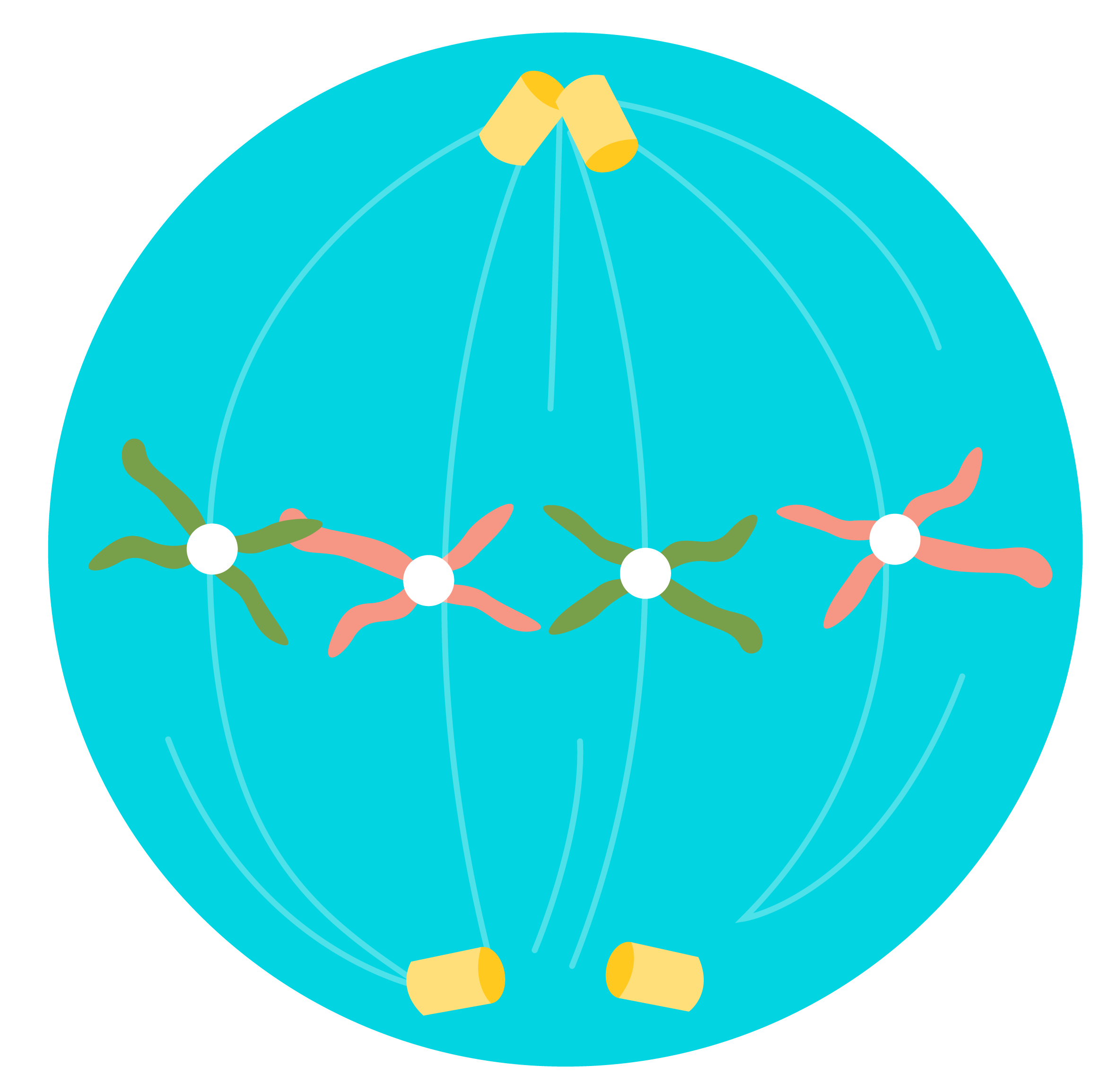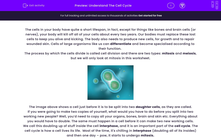The cells in your body have quite a short lifespan, in fact, except for things like bones and brain cells (or nerves), your body will kill off all of your cells about every two years. Our bodies must replace these lost cells to keep you alive and kicking. The body also needs to produce new cells, for growth and to repair wounded skin. Cells of large organisms like us can differentiate and become specialised according to their function.
The process by which the cells divide is called cell division and there are two types: mitosis and meiosis, but we will only look at mitosis in this worksheet.

The image above shows a cell just before it is to be split into two daughter cells, as they are called.
If you were going to make two copies of yourself, what would you have to do before you split into two working new people? Well, you’d need to copy all your organs, bones, brain and skin etc. Everything about you would have to double. The same must happen in a cell before it can make two new working cells.
We call this doubling up of stuff inside the cell interphase, and it is an important part of the cell cycle. The cell cycle is how a cell lives its life. Most of the time, it's chilling in interphase (doubling all of its insides) and then one day – pow, it starts to undergo mitosis.
The diagram below shows the stages cells go through during mitosis and meiosis:

Stages of mitosis:
So, what actually happens in mitosis?
1) Chromosomes duplicate and the nucleus dissolves.
2) The chromosomes are arranged along the equator of the cell on the spindle - the spindle is a thread that pulls on the chromosomes.

3) The spindles literally rip the chromosomes in two, pull each half of a chromosome to the side where it will make a new cell.
4) Now that the chromosomes are far apart, the nucleus reforms on each side and then the cell splits up to make two new identical cells.
Note: It is important to remember that the two new cells that are produced are identical. They have the same chromosomes in them so they will be doing the same job.
Let's have a go at some questions on this now.








